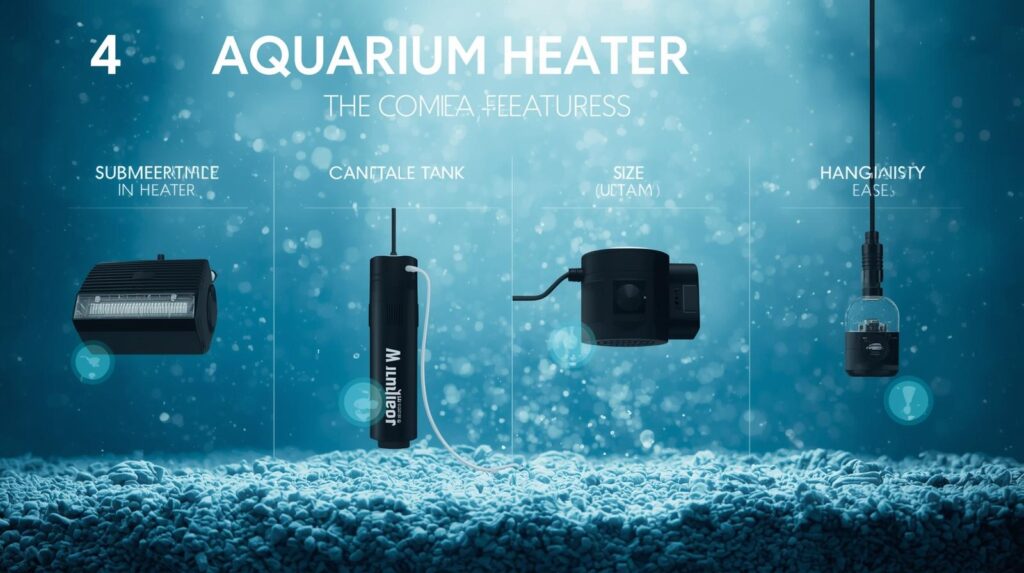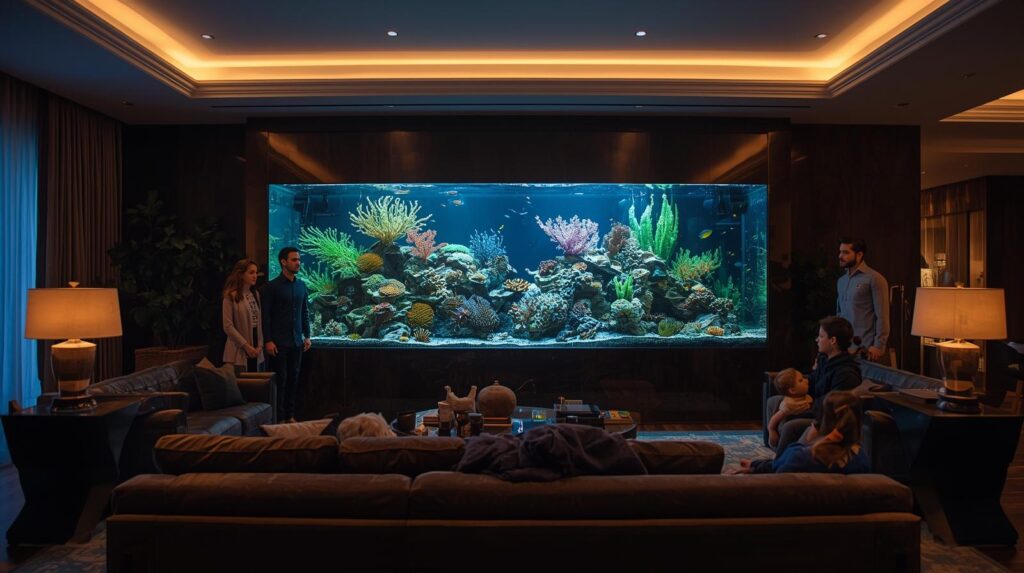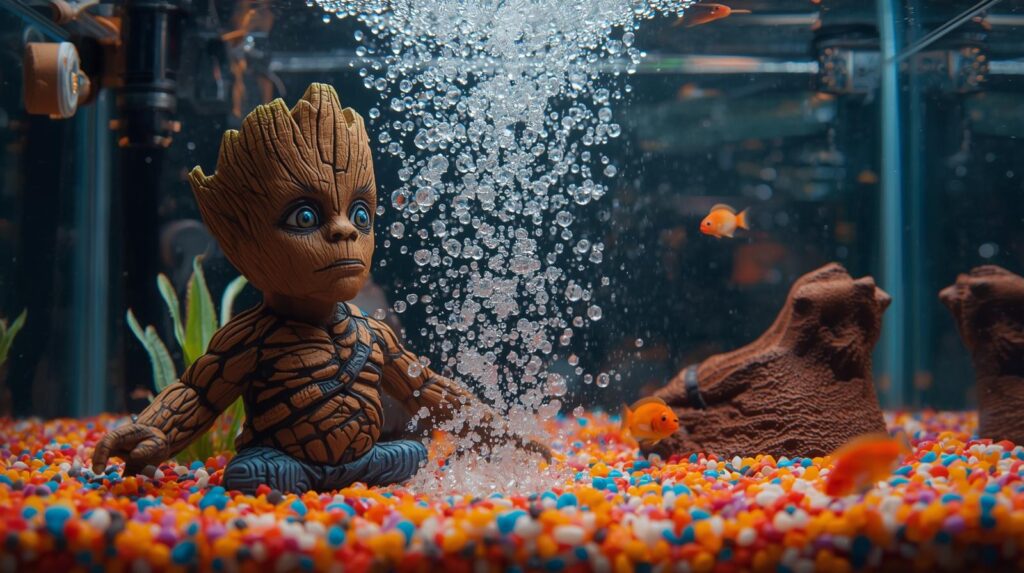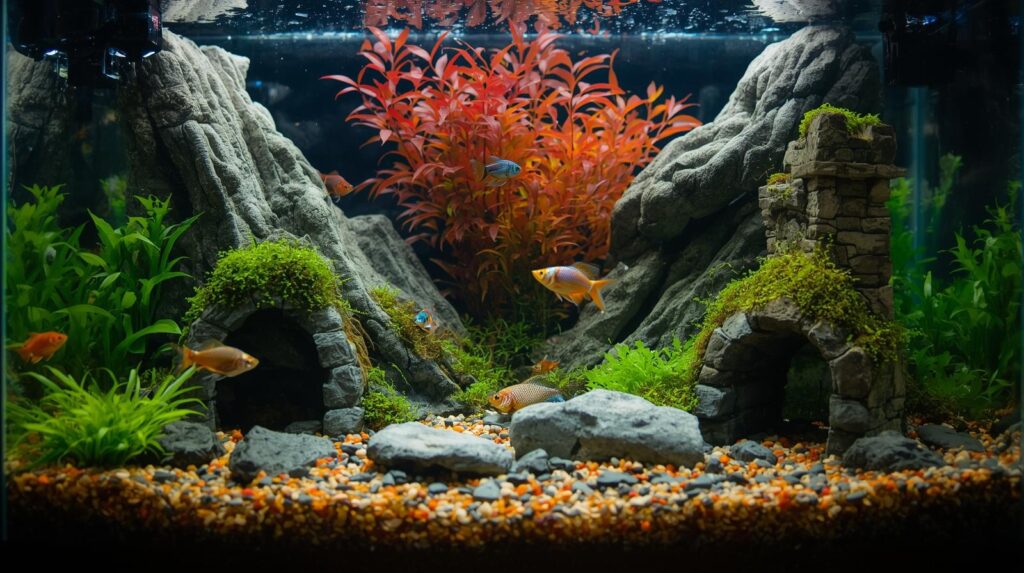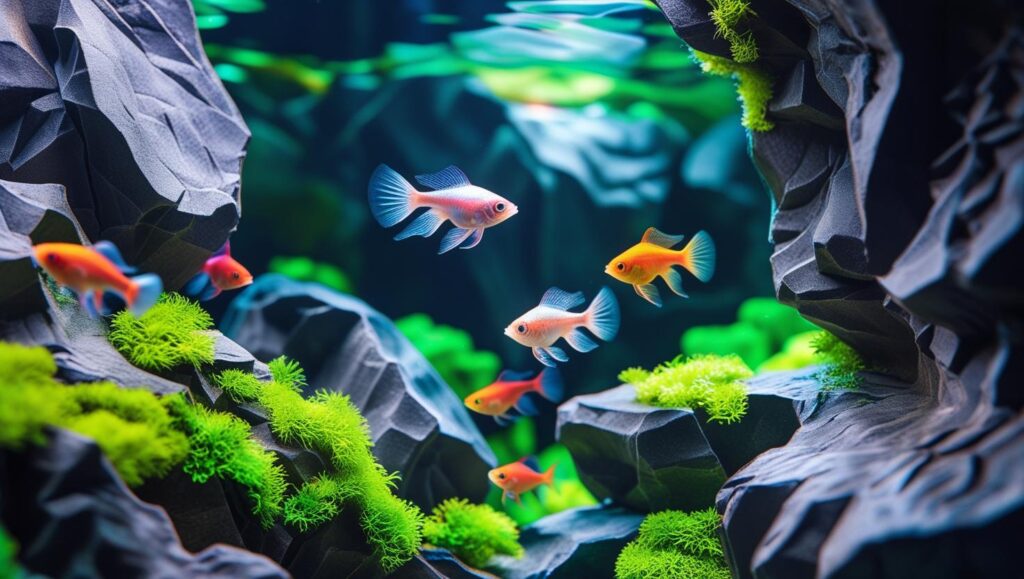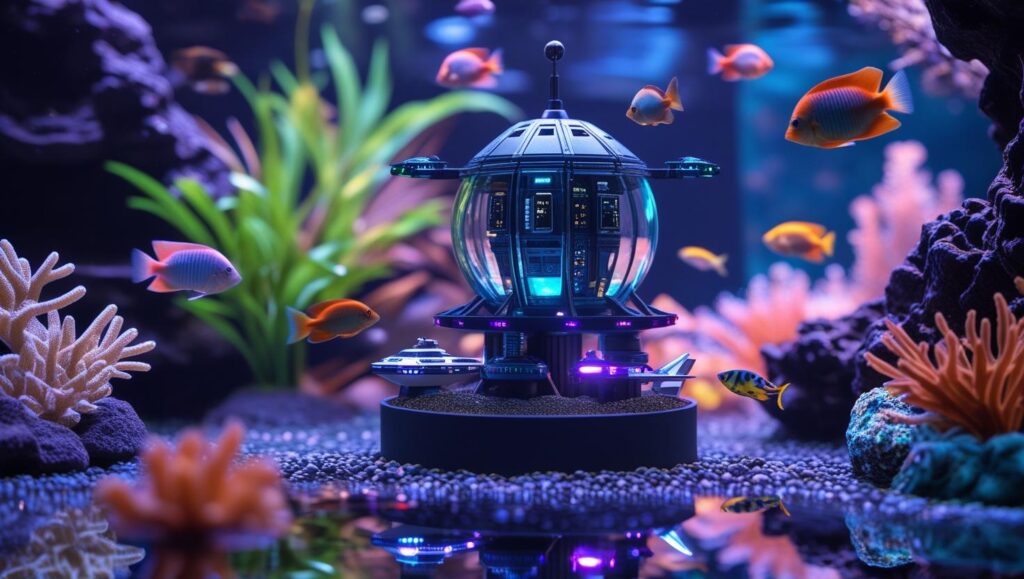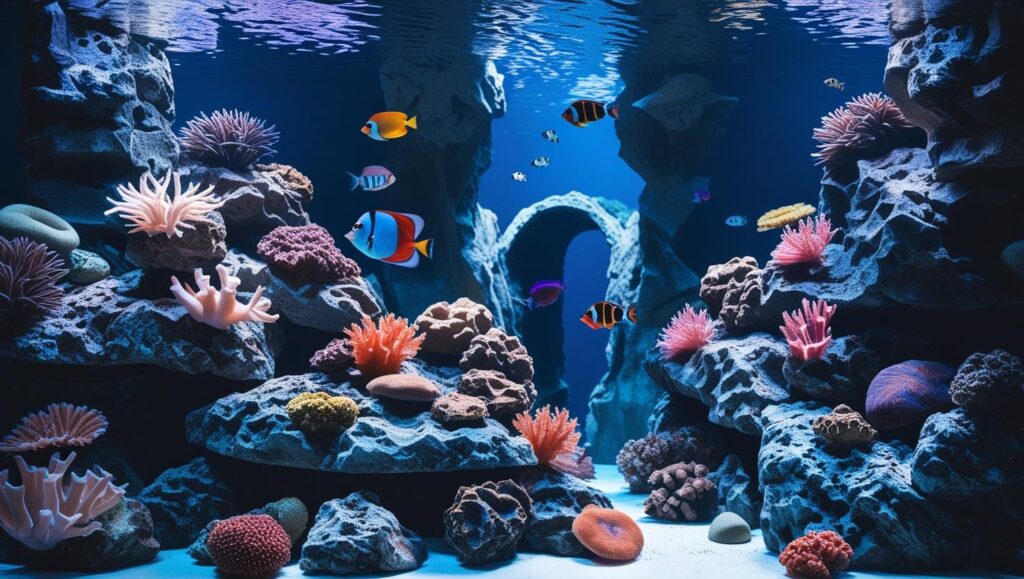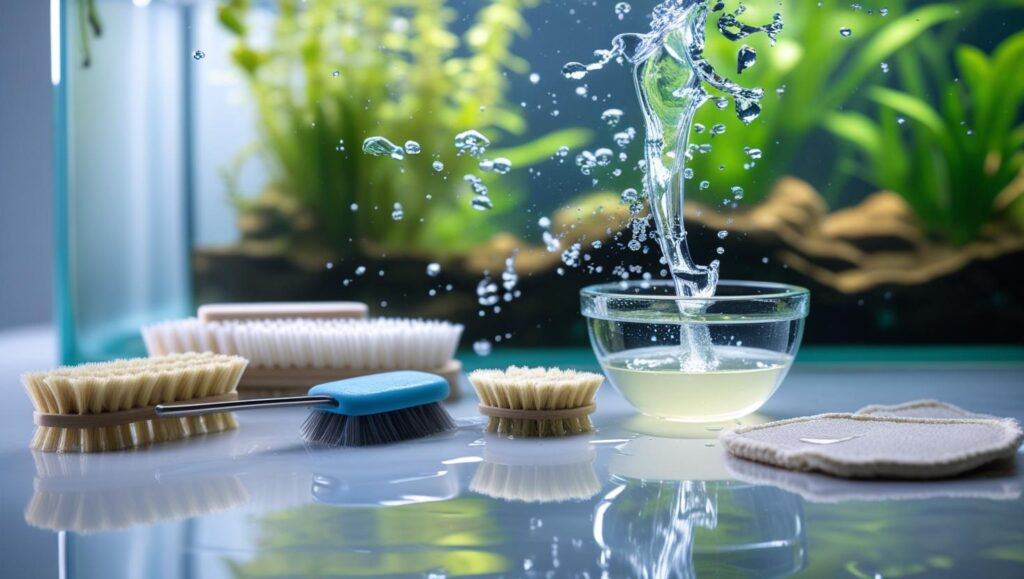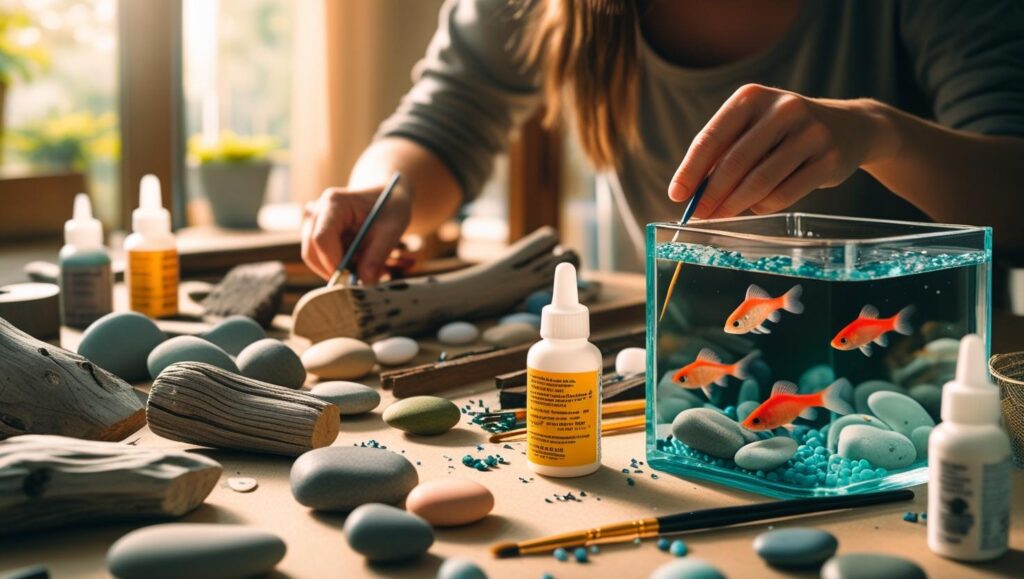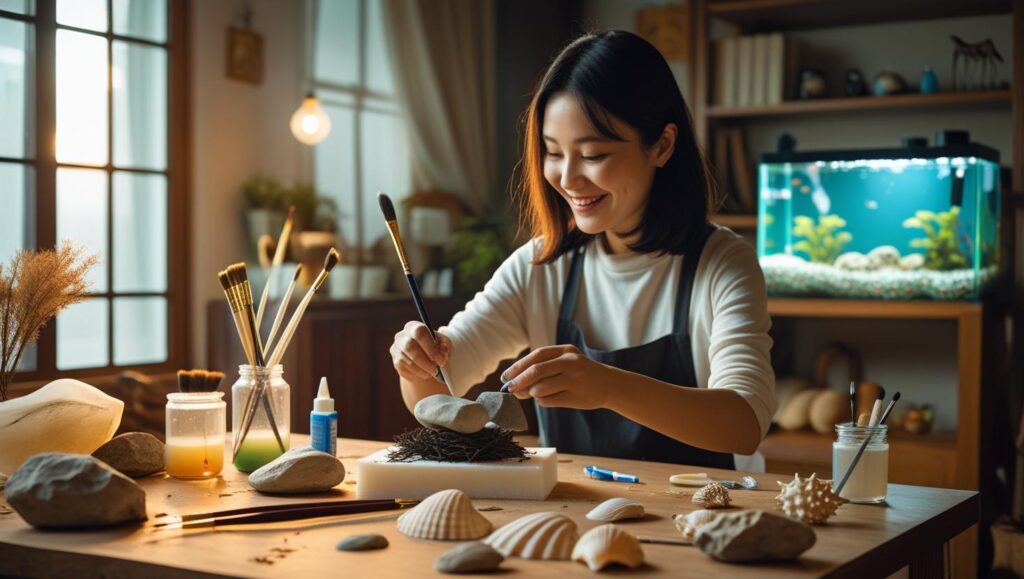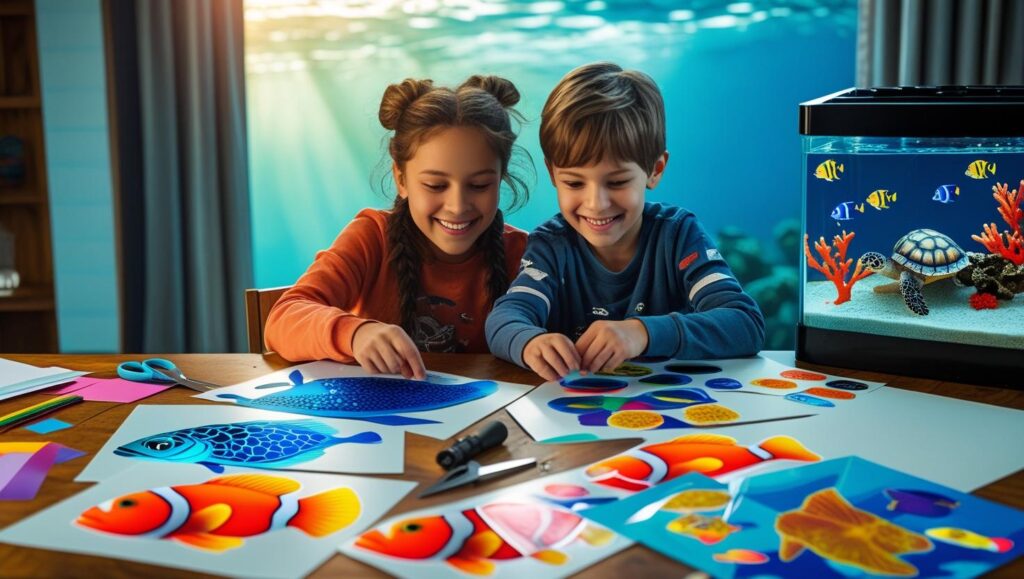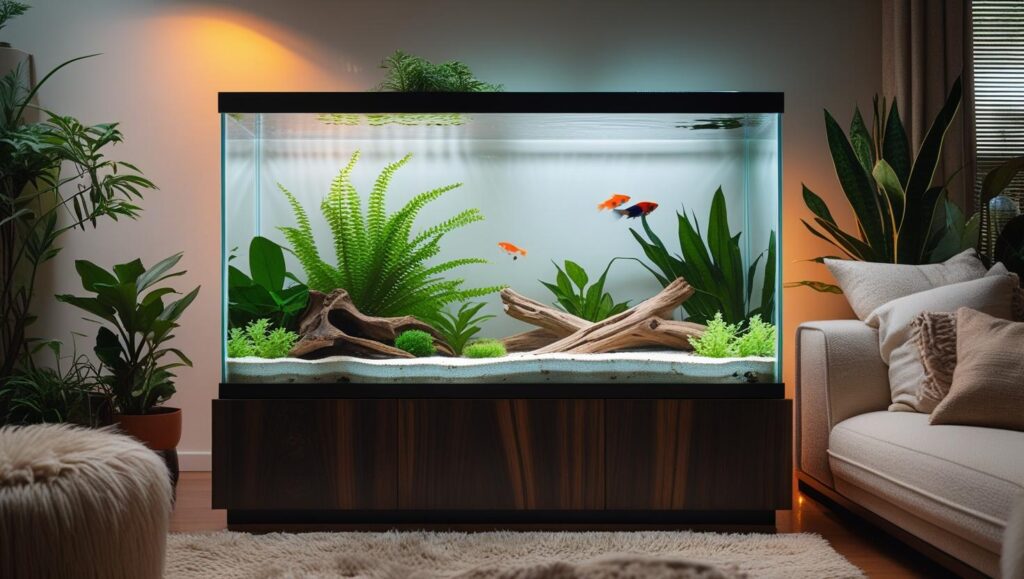Transform Your Aquarium with Extra Large Rock Decorations
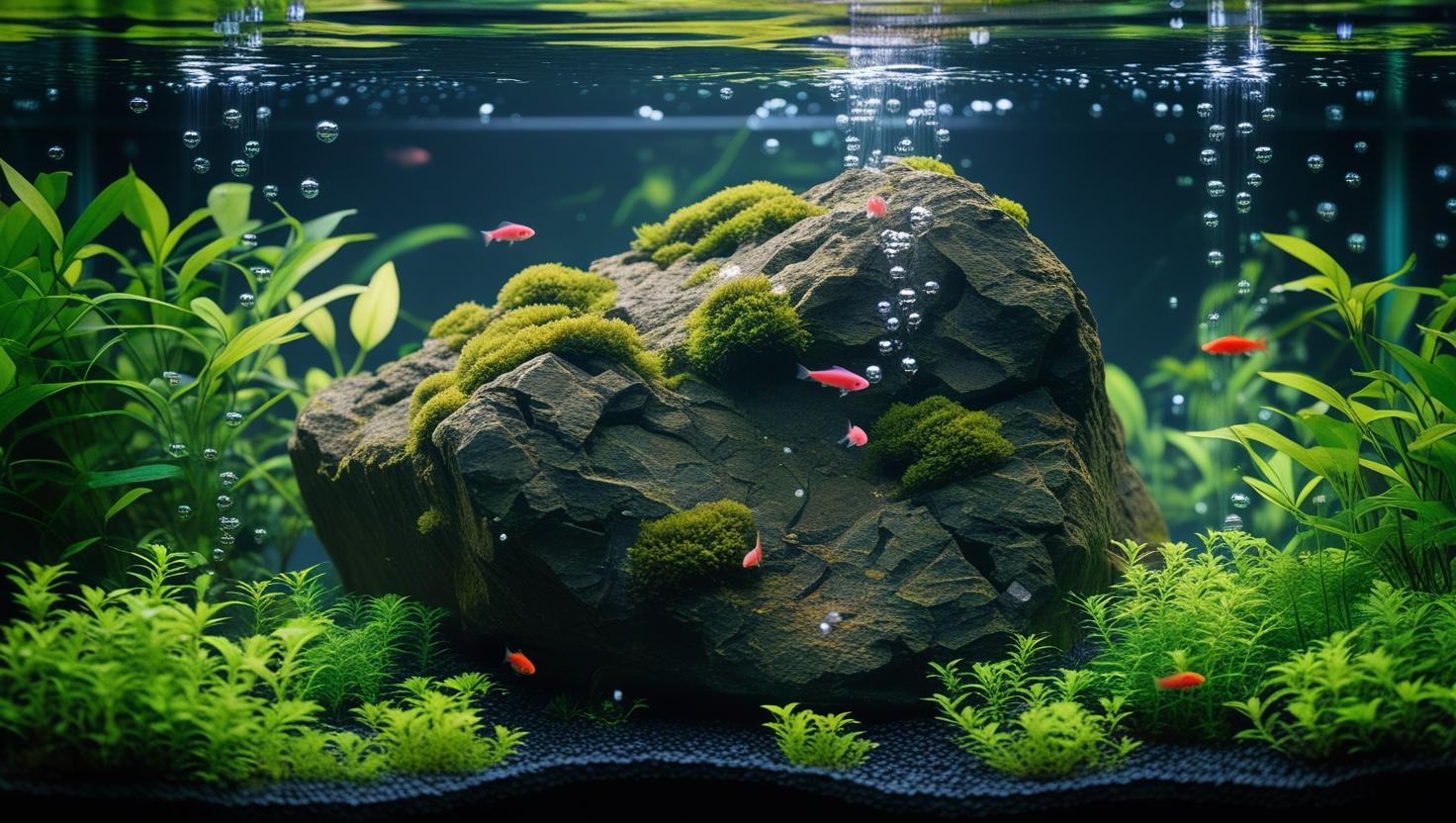
As an aquarium enthusiast, I know how transformative the right decor can be. When I first set up my own tank, it was just a simple collection of fish, plants, and basic decorations. But something was missing: depth, visual interest, and a sense of nature that was truly alive. That’s when I discovered the magic of extra-large rock aquarium decorations.
I remember the first time I added a few large rocks to my aquarium. It was like watching the tank come to life in front of me. The fish seemed to move differently, exploring new hideaways and navigating through the caves I’d created with those large stones. Since that moment, rocks have been my go-to choice for aquarium decor.
If you’ve been looking to take your aquarium to the next level, extra-large rock aquarium decorations could be the perfect solution. These oversized, natural-looking stones not only elevate the visual appeal of your tank, but they also provide functional benefits for your aquatic environment. Let’s dive into why these decorations are a must-have and how to incorporate them into your setup.
What Are Extra Large Rock Aquarium Decorations?
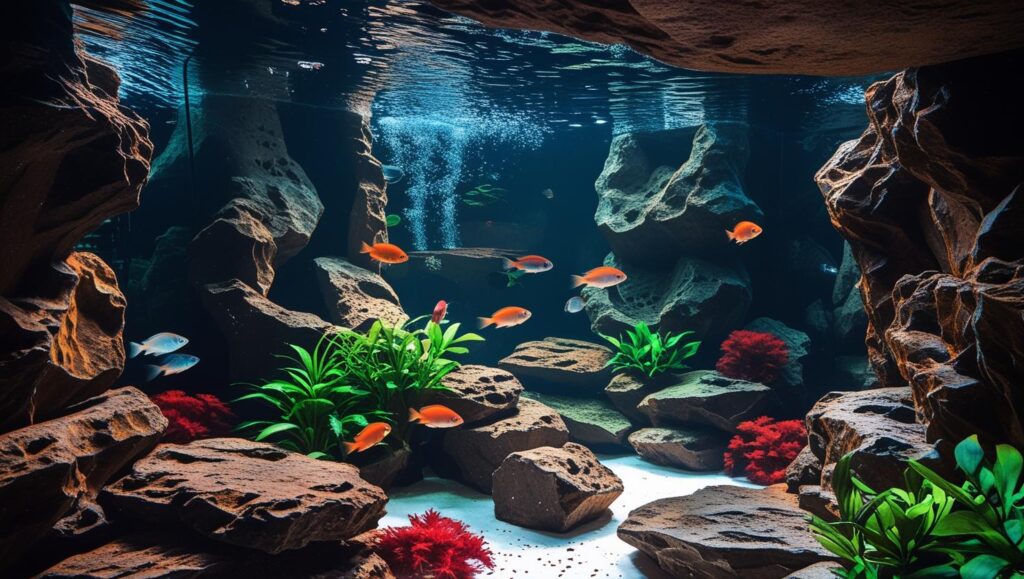
Simply put, extra large rock aquarium decorations are oversized stones or rocks used to enhance both the aesthetic and functionality of your tank. They can come in many shapes, sizes, and types, ranging from natural rocks to artificial, realistic designs. These decorations are typically larger in size than your average aquarium decor, making a bold statement in your tank.
Some common types of extra large rock decorations include:
- Natural Rocks: These stones are mined from the earth and can include granite, basalt, or sandstone. They often add a more rugged, authentic look to your aquarium.
- Artificial Rocks: Made from materials like resin, these rocks are designed to mimic the look of natural stones. They’re lighter and easier to handle but still provide that natural look.
- Rock Caves: A great addition for larger fish or species that require hiding spots, rock caves are often hollowed-out stones that give fish a safe place to retreat.
I remember when I first added a realistic rock cave to my tank—it instantly became a favourite hiding spot for my fish, and the cave’s natural appearance made the tank feel like a true ecosystem.
Why Choose Extra Large Rock Decorations Over Smaller Ones?
When it comes to aquarium decor, size does matter, especially if you have a large tank. Here’s why extra-large rock decorations might be the perfect choice for your aquarium:
1. Adds Visual Impact
The sheer size of extra-large rocks creates an immediate focal point in your aquarium. These stones often become the centrepiece of your tank, drawing attention and adding depth to the overall design.
2. Provides Hiding Spaces for Fish
Fish, especially shy or territorial species, need hiding spots to feel safe. Large rock formations or caves can provide much-needed shelter, reducing stress and encouraging natural behavior.
3. Creates a Natural Habitat
Large rocks help replicate the natural environment of many aquatic species. Whether it’s a freshwater riverbed or a rocky ocean reef, extra large rocks contribute to a more authentic feel that benefits your fish and plants.
4. Increases Surface Area for Beneficial Bacteria
In aquariums, the surface area of rocks is crucial because beneficial bacteria thrive on these surfaces. These bacteria help break down waste and keep your tank’s ecosystem in balance.
What Types of Rocks Are Best for Large Aquariums?
Choosing the right type of rock is essential for both aesthetics and the health of your tank. Here are some popular choices for large aquariums:
1. Lava Rock
Lava rocks are lightweight yet porous, making them an excellent choice for aquariums. The porous surface allows beneficial bacteria to colonize, improving water quality. They’re especially great for tanks with high oxygen demand.
2. Slate
Slate rocks offer unique textures and come in various colors, from dark grays to rich browns. Their flat surfaces make them ideal for creating stacked formations or aquascaping layouts that are visually stunning.
3. River Rocks
Smooth, rounded river rocks are a classic choice for aquariums. These rocks provide a natural aesthetic and can be arranged in a variety of ways to create a peaceful, flowing look.
4. Sandstone
Sandstone’s warm, earthy tones can bring a rustic charm to your tank. It’s perfect for creating layers or large, natural rock formations that fish can navigate around.
Can I Use Natural Rocks in My Aquarium?
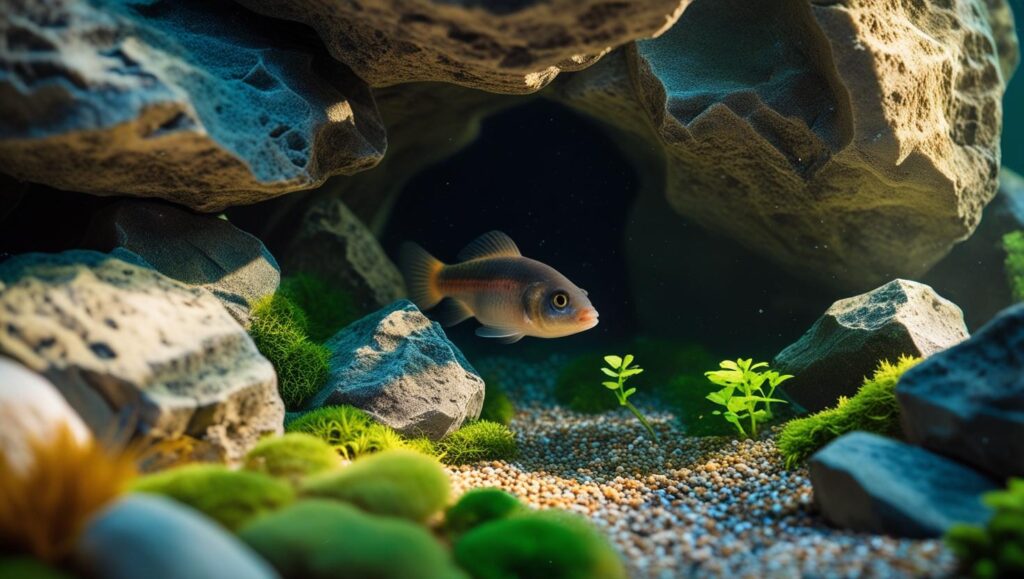
Absolutely! Many types of natural rocks are aquarium-safe and can be used in your tank. However, there are a few important things to consider before adding them to your setup:
- Cleanliness: Always clean natural rocks thoroughly to remove dirt, debris, and any harmful substances. I’ve had my fair share of mistakes when I first started, and not cleaning the rocks properly led to unwanted substances in the water.
- Avoid pH-Altering Rocks: Some rocks, like limestone, can alter the pH of your water. It’s important to test the water after adding any new rocks to ensure they aren’t negatively affecting your aquarium’s balance.
- Safe Types of Rocks: Granite, basalt, and sandstone are great choices for aquariums. They are usually pH-neutral and won’t harm your fish.
Creative Ideas for Decorating with Extra Large Rocks
Once you’ve chosen your rocks, it’s time to get creative with your tank design! Here are some ideas to inspire you:
- Rock Caves for Fish Hiding: Fish love caves! By strategically placing extra large rocks to form natural-looking caves, you can provide hiding spots for your fish, giving them a sense of security.
- Stacked Rock Formations: Stacked rocks add height and depth to your aquarium. Whether you’re creating a rocky cliff or a waterfall effect, these formations add dramatic flair to your tank.
- Central Focal Points: Use a large rock as the centerpiece of your tank. Surround it with plants and smaller rocks to create a dynamic and visually interesting scene.
- Mix with Plants: Pairing large rocks with lush plants can create a beautiful, vibrant look. The contrast between the rugged texture of the rocks and the softness of the plants can make your tank look like a true underwater paradise.
How to Maintain Extra Large Rock Aquarium Decorations
Maintaining your rocks is crucial to keeping your aquarium looking its best. Here are a few tips to ensure your extra large rock decorations stay in top condition:
- Rinse with Water: Always rinse rocks with water before placing them in your tank. This helps remove any dust or dirt that might have accumulated during handling.
- Avoid Harsh Chemicals: Never use harsh chemicals or soap to clean your rocks. They can leave harmful residues that affect your fish.
- Prevent Algae Buildup: Algae can accumulate on the surface of rocks over time. To prevent this, you can use aquarium-safe cleaners or even employ algae-eating fish to help maintain the decor.
- Check for Sharp Edges: Over time, rocks can develop sharp edges that could potentially harm your fish. It’s a good idea to check the edges periodically and smooth them if necessary.
How to Choose the Right Size of Rocks for Your Aquarium
When considering extra large rock aquarium decorations, it’s important to think about the size of the rocks in relation to the size of your tank. Large rocks can overpower smaller aquariums and create a cramped environment for your fish. On the other hand, small rocks may get lost in larger tanks. Here’s how to strike the perfect balance:
Tank Size Considerations:
- Small Tanks (10-30 gallons): Choose smaller, medium-sized rocks to avoid overcrowding the tank. You can still create dynamic structures, but keep the rocks proportionate to the tank.
- Medium Tanks (30-75 gallons): This size allows for a mix of medium and large rocks. You can build natural-looking caves and rock formations while still maintaining plenty of swimming space for your fish.
- Large Tanks (75+ gallons): Here’s where extra large rocks truly shine. You can create dramatic rockscapes and use multiple oversized stones to add layers and dimensions.
When I added some extra large rocks to my 50-gallon tank, I had to rearrange them a few times before I found the perfect placement. It was a trial-and-error process, but it was worth it once the rocks helped create a more balanced and visually striking design.
The Benefits of Aquascaping with Extra Large Rocks
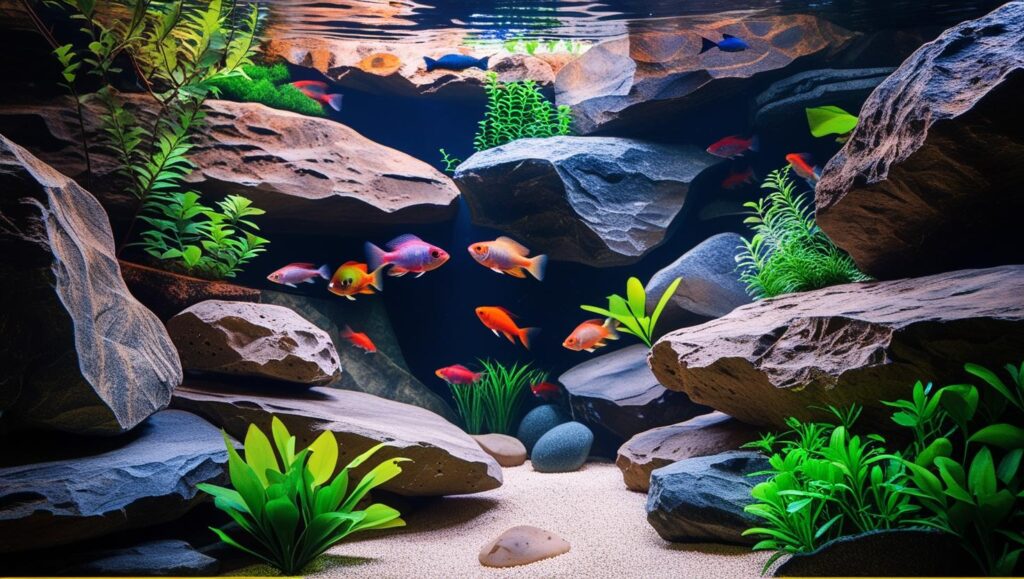
Aquascaping isn’t just about planting aquatic plants—it’s about creating a beautiful, harmonious environment for both your fish and the natural elements within the tank. Extra large rock decorations can significantly enhance your aquascaping efforts by offering more than just a place to hide.
The Impact of Rocks on Aquascaping:
- Visual Depth: Large rocks create layers in the tank, adding depth and dimension. This makes the tank appear more expansive and natural.
- Aquatic Plant Integration: Rocks act as great anchors for aquatic plants, helping them stay rooted and preventing them from floating around. This is especially helpful in larger tanks where plants need support.
- Creating Zones: Rocks can help define different areas of the tank, such as separating the plants from the open swimming area. This zoning effect can make the tank feel more structured and aesthetically pleasing.
One of my favorite aquascaping projects was designing a “mountain range” look with large slate rocks. I strategically placed them to form peaks and valleys, which helped create a sense of scale and allowed my plants to thrive in designated areas.
The Role of Rocks in Fish Behavior and Health
Not only do extra large rocks contribute to the beauty of your aquarium, but they also play a significant role in the well-being of your fish. The natural environment they create can impact fish behavior and even their health.
Stress Reduction and Natural Hiding Spots
Fish, especially species like bettas, cichlids, and catfish, benefit from having places to hide. By placing large rocks to form caves or crevices, you provide fish with safe zones where they can retreat when feeling stressed or threatened. This helps reduce aggression and gives them a sense of security in their environment.
Surface Area for Beneficial Bacteria
The surface area of rocks is vital for maintaining the nitrogen cycle within your aquarium. Beneficial bacteria that break down fish waste can thrive on these surfaces, helping to keep the water clean and maintaining a balanced ecosystem.
Encouraging Natural Behaviors
Fish often enjoy exploring and interacting with their environment. The addition of large rocks can encourage natural behaviors like hiding, resting, and foraging. These behaviors help reduce stress and promote overall health in your fish.
I once added a large piece of river rock to my aquarium, and I noticed that my fish, who had been skittish, began to feel more comfortable and engaged with their surroundings. Watching them dart through the rock formations was fascinating!
How to Avoid Common Mistakes When Using Extra Large Rocks in Aquariums
While extra large rock aquarium decorations are a fantastic addition to any tank, there are a few common mistakes that you should avoid. Being aware of these pitfalls will help you get the most out of your aquarium design and prevent issues down the road.
1. Ignoring the Weight of Rocks
Some types of rocks can be surprisingly heavy, especially larger stones. Always ensure that the rocks are securely placed in your tank. If they’re not positioned properly, they could shift and potentially crack your aquarium glass or damage your fish.
2. Not Preparing the Rocks Properly
It’s tempting to skip cleaning natural rocks, but doing so can lead to unwanted chemicals, dirt, or even pests being introduced into your tank. Thoroughly clean and soak any natural rocks before adding them to your aquarium.
3. Overcrowding the Tank
As much as large rocks add visual appeal, overcrowding the tank with them can restrict the swimming space for your fish. It’s essential to maintain a balance between rocks, plants, and open swimming areas. Consider the needs of your fish and aim to create a harmonious environment.
4. Choosing Rocks That Affect Water Chemistry
Certain types of natural rocks, like limestone, can alter your aquarium’s pH and water hardness. Always research the rock’s properties before adding it to your tank, or test your water after placing new rocks to ensure they aren’t causing any adverse effects.
Combining Extra Large Rocks with Other Aquarium Decorations
While extra large rocks are fantastic on their own, combining them with other aquarium decorations can help create a more complete and dynamic look. Here are some ways to pair your rocks with other decor elements:
1. Plants
Pairing rocks with aquatic plants is a classic aquarium decorating choice. The greenery adds contrast to the rugged texture of the rocks, and the rocks can serve as anchors for plant roots.
2. Driftwood
Driftwood and rocks are a match made in aquascaping heaven. The organic, flowing shapes of driftwood pair beautifully with the hard, angular edges of rocks, creating a well-rounded natural environment.
3. Sand or Gravel
Use sand or gravel around your rocks to enhance the natural look of your aquarium. It also provides a substrate for plants to root and gives your fish more areas to forage for food.
4. Aquarium Backgrounds
To create a truly immersive environment, consider using aquarium backgrounds behind your rock formations. A scenic background can enhance the visual appeal of your tank and make your large rocks pop even more.
Conclusion: The Impact of Extra Large Rock Aquarium Decorations
Adding extra large rock aquarium decorations to your tank isn’t just about aesthetics; it’s about creating a more natural, functional environment for your fish. Whether you’re looking to add visual interest, create hiding spots, or simply enhance your tank’s ecosystem, large rocks are a fantastic choice. As you design your aquarium, keep in mind the size of your tank, the needs of your fish, and your personal style.
Through trial and error, I’ve learned that the right balance of rocks and decor can transform a basic aquarium into a thriving, beautiful ecosystem. Whether you’re just starting out or are looking to upgrade your current setup, don’t hesitate to experiment with extra large rocks. They’ll help you build an aquarium that’s both stunning and functional—your fish will thank you for it!

